| Weight | 1 lbs |
|---|---|
| Dimensions | 9 × 5 × 2 in |
| host | mouse |
| isotype | IgG3 |
| clonality | monoclonal |
| concentration | 1 mg/mL |
| applications | ELISA, ICC/IF, WB |
| reactivity | tagged fusion proteins |
| available sizes | 1 mg, 100 µg, 25 µg |
mouse anti-HA tag monoclonal antibody (HA.C5) 2742
Price range: $100.00 through $2,600.00
Antibody summary
- Mouse monoclonal to HA tag
- Suitable for: WB,ICC/IF,ELISA
- Reacts with: tagged fusion proteins
- Isotype: IgG3
- 100 µg, 25 µg, 1 mg
mouse anti-HA tag monoclonal antibody (HA.C5) 2742
| antibody |
|---|
| Database link: Sequence -YPYDVPDYA Derived from HA 118-127. Example strain H3N8 Q03909 |
| Tested applications WB,ICC/IF,ELISA |
| Recommended dilutions WB: 1:1000-3000 ICC/IF: 1:500-2000 For best results with other assays (e.g.: Dot, ELISA, IP, etc), please determine optimal working dilution by titration test. |
| Immunogen YPYDVPDYA (HA) synthetic peptide conjugated to KLH |
| Size and concentration 25, 100, 1000µg and 1 mg/mL |
| Form liquid |
| Storage Instructions -20°C for 2 years or more. °Centrifuge after first thaw to maximize product recovery. Aliquot to avoid repeated freeze-thaw cycles. Store aliquots at 4°C for several days to weeks. |
| Storage buffer PBS, pH 7.2, 0.05% NaN3 |
| Purity affinity purified |
| Clonality monoclonal |
| Isotype IgG3 |
| Compatible secondaries goat anti-mouse IgG, H&L chain specific, peroxidase conjugated polyclonal antibody 5486 goat anti-mouse IgG, H&L chain specific, biotin conjugated, Conjugate polyclonal antibody 2685 goat anti-mouse IgG, H&L chain specific, FITC conjugated polyclonal antibody 7854 goat anti-mouse IgG, H&L chain specific, peroxidase conjugated polyclonal antibody, crossabsorbed 1706 goat anti-mouse IgG, H&L chain specific, biotin conjugated polyclonal antibody, crossabsorbed 1716 goat anti-mouse IgG, H&L chain specific, FITC conjugated polyclonal antibody, crossabsorbed 1721 |
| Isotype control Mouse monocolonal IgG3 - Isotype Control |
| target relevance |
|---|
| HA tag is a small protein tag that minimally impacts protein structure. This antibody can be used to confirm expression and quantify HA tagged recombinant proteins in Western blotting and for their purification/copurification. When imaging in situ, HA tagged proteins can be identified by this antibody when used in conjunction with a suitable secondary antibody. Click for more on: epitope tags and HA tag |
| Protein names HA tag, Hemagglutinin tag, YPYDVPDYA |
| Biotechnology The HA tag, derived from the human influenza hemagglutinin protein, is a widely employed tool in recombinant protein expression and has become an invaluable asset in molecular biology research. When incorporated at the N- or C-terminus of a target protein, the HA tag serves as a short, immunogenic peptide sequence, enabling efficient detection, purification, and characterization of the expressed protein. Its small size minimizes disruption to the target protein???s structure and function, making it suitable for a diverse range of applications. The HA tag is specifically recognized by commercially available high-affinity antibodies, facilitating the precise and sensitive detection of the tagged protein in techniques like Western blotting and immunofluorescence. Additionally, the HA tag is compatible with affinity chromatography, enabling straightforward and effective purification of the tagged protein from complex cellular extracts. This versatility has made the HA tag a valuable tool for studying protein interactions, localization, and post-translational modifications, providing researchers with valuable insights into cellular processes and molecular mechanisms across various fields of biology and biotechnology. |
Data
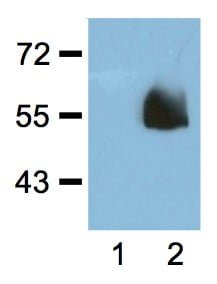 |
| 1:1000 (1µg/mL) Ab dilution probed against HEK293 cells transfected with HA-tagged protein vector; untransfected (1) and transfected (2). |
Publications
| pmid | title | authors | citation |
|---|---|---|---|
| 36321378 | A NR2E1-interacting peptide of LSD1 inhibits the proliferation of brain tumour initiating cells. | Rong Hu, Umar Farook Shahul Hameed, Xiang Sun, Balakrishnan Shenbaga Moorthy, Wen Zhang, Philip D Jeffrey, Li Zhou, Xin Ma, Fangjin Chen, Jianfeng Pei, Pankaj K Giri, Yonggao Mou, Kunchithapadam Swaminathan, Ping Yuan | Cell Prolif 56:e13350 |
| 36119843 | NDRG2 inhibits pyruvate carboxylase-mediated anaplerosis and combines with glutamine blockade to inhibit the proliferation of glioma cells. | Jiancai Wang, Xiang Sun, Jiayuan Wang, Kun Zhang, Yiyi Yuan, Yan Guo, Libo Yao, Xia Li, Lan Shen | Am J Cancer Res 12:3729-3744 |
| 36090478 | Stabilization of DEPTOR sensitizes hypopharyngeal cancer to radiotherapy via targeting degradation. | Xuecen Wang, Zhirui Cao, Xin Yue, Tingyu Liu, Gesi Wen, Dongmei Jiang, Weijian Wu, Liyuan Le, Yan Wang, Chengtao Wang, Ziyang Wang, Meng Jin, Meiyan Zhu, Shasha He, Xiaoyue Zhang, Xianzhang Bu, Ran-Yi Liu, Zhenwei Peng, Yong Chen | Mol Ther Oncolytics 26:330-346 |
| 35847954 | The NFAT3/RERG Complex in Luminal Breast Cancers Is Required to Inhibit Cell Invasion and May Be Correlated With an Absence of Axillary Lymph Nodes Colonization. | Lucie Coillard, Frédéric Guaddachi, Maëlle Ralu, Eva Brabencova, Christian Garbar, Armand Bensussan, Morgane Le Bras, Jacqueline Lehmann-Che, Sébastien Jauliac | Front Oncol 12:804868 |
| 35761309 | Targeting ferroptosis with miR-144-3p to attenuate pancreatic β cells dysfunction via regulating USP22/SIRT1 in type 2 diabetes. | Shanshan Zhang, Xiao Liu, Jihong Wang, Fengjuan Yuan, Yali Liu | Diabetol Metab Syndr 14:89 |
Protocols
| relevant to this product |
|---|
| Western blot ICC |
Documents
| # | SDS | Certificate | |
|---|---|---|---|
| Please enter your product and batch number here to retrieve product datasheet, SDS, and QC information. | |||
Only logged in customers who have purchased this product may leave a review.
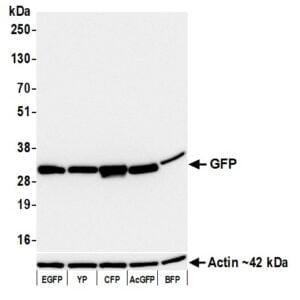
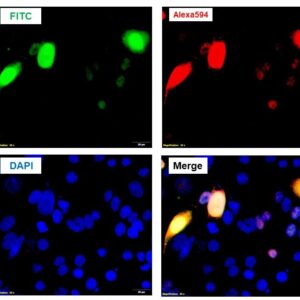
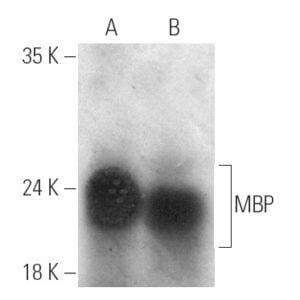
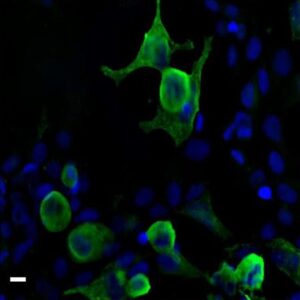
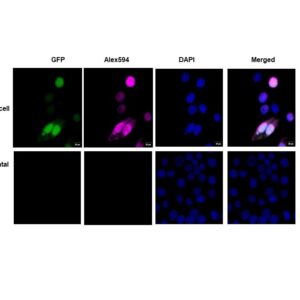
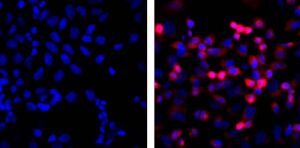
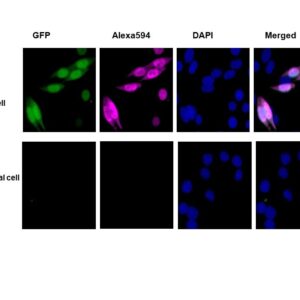
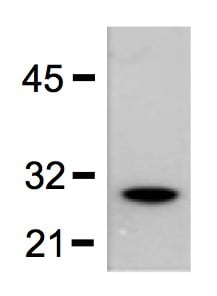
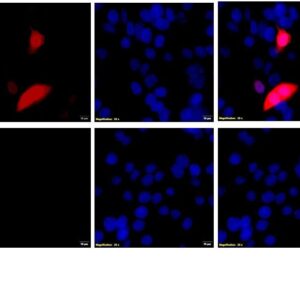
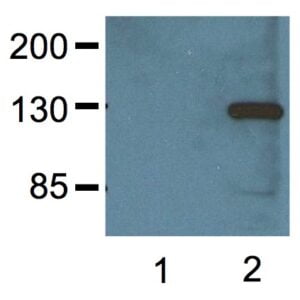

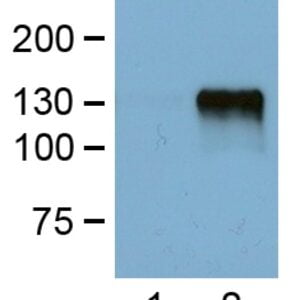

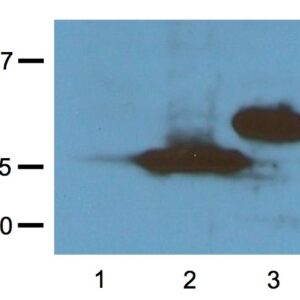
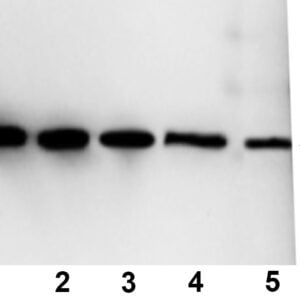
Reviews
There are no reviews yet.